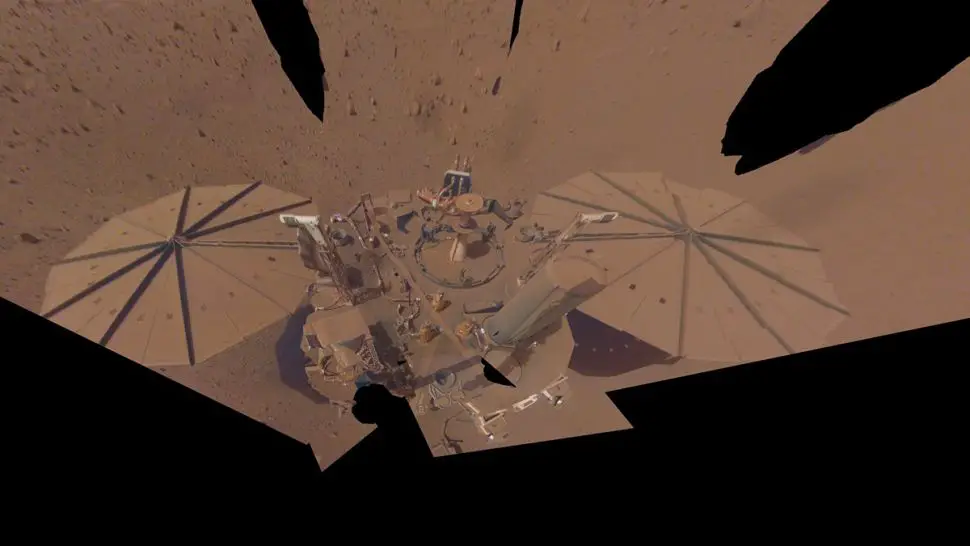Mars is the planet that has captured the attention of our civilization because of its uniqueness and mysterious nature. Olympus Mons, a massive mountain on the red planet is one of its kind as it possesses strange features that marvel our scientists. Researchers recently conducted a study to learn about the similarities between volcanoes on Olympus Mons on Mars and active volcanic islands on Earth. Scientists were amazed by the outcome of the study. What did astronomers discover during the study? Continue reading to find out.
How Astronomers Discovered Olympus Mons as the Largest Volcano in the whole solar system
Astronomers remained fascinated by the amount of volcanic eruption emerging from Olympus Mons. During a recent study, scientists reached a satisfactory conclusion. During an interview with Sky News on July 27, Astronomer Fred Watson who participated in this research revealed that the Martian volcano is similar to the shield volcanos on our home planet. he also said that Olympus Mons volcano is comparable to volcanic activities in the tallest mountain on Earth named Mauna Kea in Hawaii.
“Olympus Mons is the biggest volcano known in the whole solar system. It’s known that Olympus Mons was very active over a very long period roughly three or four billion years ago,” Watson said, “the new element is the idea that perhaps Olympus Mons was once an island because we know that Mars is in the northern hemisphere and the volcano is in the northern hemisphere and we know that it was once an ocean.”
Watson also highlighted that Olympus Mons could be standing in the water since four billion years ago based on the evidence obtained from the appearance of rocks surrounding it. These rocks resemble lavender moving freely in the ocean.
Scientists that conducted this study discovered that early Mars has oceans flowing on its surface. The presence of water on the surface of early Mars could have made it possible for extraterrestrial life to exist on the red planet. However, scientists are still researching to prove this.
Similarities Between Olympus Mons Volcano and Earth’s Volcano
While we are yet to fully explore Olympus Mons and its environment in full, this new study has enabled us to have fascinating knowledge about the Mount. Comparing the Mountain’s volcano to that of mountains on Earth, scientists were amazed by what they discovered in the course of conducting this new study.
“Olympus Mons giant volcano shares morphological similarities with active volcanic islands on Earth where major constructional slope breaks systematically occur at the sea-air transition in response to sharp lava viscosity contrasts,” the new study explains.
Researchers that conducted the study revealed that the reading proved the presence of resembling features of the northern flank of the 1118-mile (1800 km) distant Alba Mons volcano. In addition, this Alba Mons Volcano matches the hypothesis that suggests the existence of a massive early ocean that occupied the lowlands on Mars billions of years ago.
Researchers highlighted that Olympus Mons has mysterious shoreline heights proving that there could be internal forces causing its surface to rise higher during the early formation of the Tharsis Bugle in the Hesperian period. As the oceans dries up, the shorelines began to partly disappear as subsequent sub-aerial activities covers them up during the Amazonian period.
Researchers assumed that the 3.7-mi (6-km) high concentric steep slope surrounding Olympus Mons came into existence when lava came in contact with liquid water when Mount’s volcano was still an active volcanic island in the late Noachian during the Hesperian period.
How Scientists conducted the study
Universe Today revealed that the researchers obtained their readings for the study through the data provided by the Mars Orbiter Laser Altimeter (MOLA). The MOLA is an instrument mounted on NASA’s Mars Global Surveyor (MGS). The exciting outcome of the research shows that the volcanic mountain is the tallest in the solar system, with a height of 13.6 mi (21.9 km). Hence, scientists will likely conduct more studies to understand some mysteries about Olympus Mons.
“It’s about two and a half times the height of Mount Everest (8.85 km; 5.5 mi),” Universe Today wrote, “according to current estimates, this extinct shield volcano formed during Mars’ Hesperian Period (ca. 3.7 to 3 billion years ago), which was characterized by widespread volcanic activity and catastrophic flooding.”
Scientists took advantage of radiometric methods to monitor the date of the volcanic shorelines and early water on Mars. In addition, this method enabled scientists to obtain valuable insights about early Mars and its fate.
Researchers published the study in the Earth and Planetary Science Letters.
Conclusion
Olympus Mons has remained one of the most intriguing planetary objects on Mars. In a recent study, scientists explored the conditions of ancient Mars and how its Olympus Mons turn out to become the largest volcanic mountain in the solar system. You can learn about this study from the article above. What do you think about Olympus Mons?





